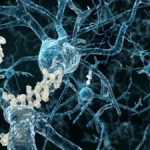Alzheimer’s disease – a form of dementia – is on the rise as our population continues to age. Alzheimer’s disease affects memory and cognitive function, which can make everyday living quite difficult. In 2015, there was ample news surrounding Alzheimer’s disease, especially regarding treatment and risk factors, which can increase the likelihood of developing Alzheimer’s disease.
Below are Bel Marra Health’s top Alzheimer’s disease news-stories that we reported to you over the course of the past year.
Blood Sugar and Alzheimer’s: Your risk of Alzheimer’s goes up if you have this…
Advertisement
Researchers have discovered a link between high blood sugar and Alzheimer’s disease risk.
 Alzheimer’s disease is a form of dementia that impairs cognitive function and steals the memories of the individual. The latest research suggests those with elevated blood sugar are at higher risk of developing Alzheimer’s disease.
Alzheimer’s disease is a form of dementia that impairs cognitive function and steals the memories of the individual. The latest research suggests those with elevated blood sugar are at higher risk of developing Alzheimer’s disease.
The research comes from the University of Wisconsin-Madison. Researchers tested the memories of 150 adults over the age of 61 who showed no signs of memory impairment. Tests for insulin resistance and brains scans were also conducted.
The findings uncovered that 40 percent of participants had a relative with Alzheimer’s disease, 40 percent had a gene mutation that increased their risk of Alzheimer’s disease, and nearly five percent had type 2 diabetes. Learn More
Alzheimer’s Prevention: Alzheimer’s disease stoppable much earlier by reducing beta amyloid protein
New research suggests that a reduction of beta amyloid protein can help prevent Alzheimer’s.
 Alzheimer’s disease can be stopped much earlier by reducing beta amyloid protein, new findings suggests. The findings come from The Nantz National Alzheimer Center at Houston Methodist Hospital as part of a landmark trial. It looks at a key protein in the brain that may be able to prevent memory loss nearly one decade sooner than symptoms usually emerge in seniors.
Alzheimer’s disease can be stopped much earlier by reducing beta amyloid protein, new findings suggests. The findings come from The Nantz National Alzheimer Center at Houston Methodist Hospital as part of a landmark trial. It looks at a key protein in the brain that may be able to prevent memory loss nearly one decade sooner than symptoms usually emerge in seniors.
The trial focuses on treatment to reduce the impact of amyloid proteins. The researchers used positron emission tomography (PET scans) and found that beta-amyloid begins forming in the brain of Alzheimer’s patients one to two decades prior to visible symptoms. Researchers believe it is this accumulation of beta-amyloids that contribute to memory loss. Learn More
Alzheimer’s Diagnosis: Sniff test to help diagnose Alzheimer’s disease
A recent study found that testing a patient’s sense of smell can help diagnose Alzheimer’s.
 A sniff test may prove effective as a method for diagnosing Alzheimer’s disease. A recent study suggests that a poor sense of smell could be an indicator of cognitive impairment and early dementia. Researchers found that seniors who performed poorly on the sniff test were more likely to show signs of memory loss within 3.5 years. Subjects with the worst sense of smell had the highest risk of developing Alzheimer’s disease.
A sniff test may prove effective as a method for diagnosing Alzheimer’s disease. A recent study suggests that a poor sense of smell could be an indicator of cognitive impairment and early dementia. Researchers found that seniors who performed poorly on the sniff test were more likely to show signs of memory loss within 3.5 years. Subjects with the worst sense of smell had the highest risk of developing Alzheimer’s disease.
The research comes from investigators at the Mayo Clinic who looked at 1,430 men and women with an average age of 79. The researchers used standardized sniff tests to assess how accurately participants could identify 12 scents – including six foods, such as banana and cinnamon, and six non-foods, such as petrol, soap and roses. Learn More
Alzheimer’s Research: Understanding Alzheimer’s disease plaques in brain easier with amyloid protein cues
Biologists have discovered new information about amyloid plaques.
 Alzheimer’s plaques are clumps of fibrous protein, referred to as amyloid plaques, commonly found in the brains of Alzheimer’s patients. Amyloid plaques were first discussed about 150 years ago and have since been associated with Parkinson’s disease, Huntington’s disease, rheumatoid arthritis and Alzheimer’s disease. Recent findings suggest that amyloid plaques may also have a beneficial role in the function of healthy cells.
Alzheimer’s plaques are clumps of fibrous protein, referred to as amyloid plaques, commonly found in the brains of Alzheimer’s patients. Amyloid plaques were first discussed about 150 years ago and have since been associated with Parkinson’s disease, Huntington’s disease, rheumatoid arthritis and Alzheimer’s disease. Recent findings suggest that amyloid plaques may also have a beneficial role in the function of healthy cells.
MIT biologists found that yeast cells need to build amyloid-like structures during the production of reproductive cells. Lead author, Luke Berchowitz, said, “Amyloids in the brain persist for decades. We just can’t get rid of them, yet yeast cells seem to have a mechanism for getting rid of them in 15 minutes. If we can harness that mechanism, and really understand it, that could lead to anti-amyloid therapeutic opportunities.” Learn More
Alzheimer’s Detection: Chances of early detection of Alzheimer’s disease increased
The newly approved amyloid PET scans can increase the chance of detecting Alzheimer’s.
 The chances of early detection of Alzheimer’s disease increased with the use of amyloid PET scans, which are just as effective as the previous cerebrospinal fluid sample method. The research comes from Lund University and is the most extensive so far.
The chances of early detection of Alzheimer’s disease increased with the use of amyloid PET scans, which are just as effective as the previous cerebrospinal fluid sample method. The research comes from Lund University and is the most extensive so far.
Methods of detecting Alzheimer’s disease include memory tests, computed tomography and cerebrospinal fluid sample method. Although these methods have shown to be effective, the cerebrospinal fluid sample method is only offered to those in memory clinics, so many individuals who needed it never get the test.
In Sweden a method called amyloid PET scans has recently been approved. It uses a substance which binds to a protein in the brain and is administered to the patient. The brain protein is β-amyloid and is a marker for Alzheimer’s disease. This is then mapped using PET scans. Learn More
Obesity and Alzheimer’s Risk: Midlife obesity increases Alzheimer’s disease risk
New research suggests that midlife obesity increases Alzheimer’s risk.
Advertisement
 Just in case you need another reason to watch your waistline, researchers at the National Institutes of Health (NIH), provide you with a compelling one; new research says midlife obesity may influence not only the chances of developing Alzheimer’s disease, but how early it will develop as well.
Just in case you need another reason to watch your waistline, researchers at the National Institutes of Health (NIH), provide you with a compelling one; new research says midlife obesity may influence not only the chances of developing Alzheimer’s disease, but how early it will develop as well.
Midlife obesity has long been seen as a causative factor for increasing the risk of Alzheimer’s. But closer observation shows that being obese at age 50 may affect the age, years later, when Alzheimer’s strikes. Among those who did develop the disease, the speed of the onset of Alzheimer’s was directly proportional to the number of extra midlife pounds – the more pounds, the faster the onset. Learn More
Although there is still much to learn about it, science and medicine continues to explore further into the depths of Alzheimer’s disease, helping us understanding how and why it strikes and how to prevent it. We hope that in 2016 research will bring us closer to a cure for Alzheimer’s disease and help better treat all those who are affected by it.
